As a citizen of the world my heart belongs to many countries. I am an Iranian by birth, an American by choice, and a resident of New Zealand.
In 1967 I immigrated to the United Sates where I received my graduate degrees. My last visit home to Iran was in 1974 during the rule of the late Shah. At that time I was so upset with the amount of corruption, the lack of freedom of expression and other basic human rights, I made a decision not to go back. I was young, futuristic, and an educated person who didn’t see any hope for democracy or a stable future for my young family in my old country.
In 1979 the Islamic Republic of Iran was brought to power with the backing of the United States (BBC documentary February 2009, “Fall of a Shah”), and Imam Ayatollah Khomeini was installed as head of the country. This was during the Cold War. President Carter and the US administration thought that a religious Islamic government would be a stronger force against the threat of the spread of communism and in stopping Russia from influencing and possibly taking over Iran. The US was right in one way because Iran today is definitely not a communistic country, but wrong by not understanding the power of Islam in the region and their Imams. In the end, both Russia and the US lost in trying to gain control of this strategically important country in the Middle East.
This new very religious regime, a theocracy, made my decision of not returning to Iran even stronger as I was not a devout Moslem to appreciate or value a change of this kind. I could have gone back for visits, however, as I was struggling to learn English proficiently to obtain my doctorate degree, working and coaching full-time, and providing for a growing family, I honestly didn’t have the time or the means to travel anywhere.
Hence, I never set foot in Iran for 35 years. Unexpectedly, in April 2009 and again in August 2010, I was invited as one of the government’s guests to attend a conference in Tehran in honor of “Iranian Scholars Living Abroad”. It was a life-changing experience, and Iran is more than I could have ever imagined. I am grateful to Mr. Rahmani Movahed, the former Ambassador of the Islamic Republic of Iran in New Zealand for submitting my name, and also to Mr. Abbas Nozari and Mr. Ali Nemati of the Iranian Embassy in Wellington for their invaluable help in putting my travel documents together quickly.
I feel an absolute obligation to thank the organizers of the conference Mr. Moshaie for the magnificent job he did in hosting 800 Iranians from around the world. My heartfelt thanks to Mr. Said Hariri and Ms. Khalily for their enormous assistance in facilitating my return flight tickets.
Against my earlier judgments, I was thrilled in my retirement years to receive such an invitation. But I must admit that I couldn’t help being a little worried not knowing if my award winning books, Islam versus Terrorism, and The Journey – An Immigrant’s Story would put me at risk or in a troublesome position with the censors in the country. On April 10th I completed my contract as an invited guest lecturer for the World Voyage with Holland America and flew from Kenya to Tehran. Many of the passengers including my American wife, Bernadette, kept asking me, “Was it safe to go to Iran and would I be coming home?” Everyone was concerned for my safety.
I realize that saying positive words about Iran may be hard to accept for Westerners, when all they have heard is so much negative rhetoric by the media, the Israeli government and particularly from the Bush Administration. President Bush called Iran part of an Axis of Evil and a terrorist nation out to build a bomb. Facts I learned about Iran after my 35 years of being away were quite the opposite. Iran’s nuclear plans and their relations with Hezbollah, Hamas, Syria, and Iraq have also made many Westerners suspicious and skeptical wondering what are the Iranians up to. I was curious as well. Contrary to many false assumptions, I found the Islamic Republic of Iran to be a peaceful country deserving of some recognition from the rest of the world. In the recent past, there has not been acts of terror in Iran where as bordering countries have had many incidents of terror. I felt it was the safest nation in the Middle East to travel to and to enjoy a holiday filled with history, culture, art, archaeological sites, theater and cinema, architectural wonders, zoological parks, museums, and mouth-watering Persian food.
It is a cash-only society even banks do not accept credit cards. I learned the hard way when leaving Iran, because I had 9 kilos of overweight luggage and at a charge of $50 per kilo, if I hadn’t had the cash on hand to pay the $450 fine on the spot to Emirates Airlines; I would have missed my flight home.
Every merchant has an updated daily chart for the exchange rates, and most foreign currencies are accepted. When I was there the US dollar was equal to one Iranian Toman and quite popular to use. My thoughts are that by not accepting credit cards, Iran has cleverly figured out how to hurt the US economically, as the big banks in the US are no longer earning the income generated from credit cards used in Iran; payback for what the US did to Iran with the economic embargo and freezing of Iranian assets in the US to financially hurt Iran.
In the August 2008 issue of the National Geographic Shirin Ebadi, the Iranian lawyer who won the 2003 Nobel Peace Prize said: “When I go abroad, people are surprised when they realize that 65 percent of the college students here are girls. Or when they see Iranian paintings and Iranian architecture, they are shocked. They are judging a civilization just by what they have heard in the last 30 years”. The media has portrayed the Islamic revolution in a negative way; the rollbacks of personal freedoms, particularly for women; the nuclear program and antagonism with the West. They know nothing of the thousands of years that came before – what the Iranians went through to remain distinct from their invaders, and how they did it. For example, after the Arabs came, and Iran converted to Islam, eventually we turned to the Shiite sect, which was different from the Arabs, who are Sunni. They were still Muslims, but not Arabs.”
My reason for writing this piece is to share facts and to give another point of view, the other side of the coin, and then you can make your own fair judgment about Iran. I had numerous questions myself and really didn’t know what to expect. I had been told by many of my relatives that Iran is a better place than it was 35 years ago. They encouraged me to visit. Personally, I wanted to form my own opinion and know firsthand and so as a reporter would do, I made unbiased observations. I write books and give lectures on the Middle East on cruises; I wanted to know the truth; I wanted to see everything with my own eyes; and I wanted to listen.
I discovered Iran to be a safe and peaceful country in the region. Countries that border Iran are not trouble free. Turkey has a Kurdish problem, and Georgia, Turkmenistan, Afghanistan, Pakistan, Iraq, Saudi Arabia, and India have all had repeated terror attacks while Iran has been free of turmoil.
Iranians no longer allow any foreign country to dictate to them. Therefore, they have drawn a line in the sand for no more tyrants, no more dictators, no more Western-backed puppets to interfere in their internal affairs. The recorded history of Iran spans 2,500 years, culminating in today’s Islamic Republic of Iran. It is a new constitutional theocracy and a grand experiment.
Ironically, some people, Iranians along with most foreigners, wonder if a country can be run effectively by holy men imposing an extreme version of Islam on a people soaked in such a rich Persian past. After one looks at the magnitude of the progress that Iran has made since the revolution, they would agree that the country actually has accomplished much more than what the late Shah and his associates did in the past.
In my opinion, Iran still has a long way to go specifically regarding human rights, freedom of speech, and treatment of women, in becoming once again the great Persia of the past. However, no matter what any one may think of Iran and its ulterior motives, its infrastructure, economy, agricultural output, and industries are much better than they were 35 years ago.
As in the ancient past Iran is still a crossroads of civilizations, strategically important and a significant force in the world as a major player for peace in the Middle East, war on drugs and terrorism, and the flow of oil. In brief, it is a country to be reckoned with and not to be ignored.
I didn’t have a chance to visit Iran’s nuclear facility in Bushehr. Few people probably know or remember that the Western backed Shah built this facility in the mid ‘70’s. The Shah sent 36 Iranian students to MIT to study nuclear engineering. At this time Walter Rosenblith was the Provost, and Dr. Jerome Wiesner was the president of MIT. Some students, for similar reasons as mine, did not return to Iran, however the ones that did are the chief staff of Iran’s present nuclear facility. Dr. Nelson Yuan-Sheng Kiang who was a professor at MIT during this time gave this surprising information to me.
The Iranian Government has claimed time after time, that their nuclear facility is for peaceful purposes. Iran has signed the non-proliferation pact and is a supporter of the two state solution for Israel and Palestine. Therefore, as President Ahmadinejad has said, “It would make absolute no sense to wipe out Israel because Palestinians would be killed as well.”
Having said that, one must keep in mind that most of Iran’s neighbors have nuclear weapons, and some without signing the nuclear non-proliferation pact: Israel and India come to mind. Furthermore, how can people live in a rough and dangerous neighborhood like the Middle East without having the same kind of weapon to equalize the playing field? And perhaps that is the one reason Iran keeps showing its military might from time to time.
Iran needs a much better source of energy. During the monarchy of the Shah, materials were purchased from the US and all the political wheeling and dealing was done with America. For the past 30 years, there has been no relationship between Washington and Tehran, other than economic sanctions and the freezing of Iranian assets held in banks in the US. Today Iran’s trading partners are Germany, France, Italy, Russia, China, Japan, and South Korea. Since the late 1990’s, Iran has increased its economic ties with other developing countries, including Syria, India, Cuba, Venezuela, and South Africa. Iran is also expanding its trade ties with Turkey and Pakistan and shares with its partners the common goal of creating a single economic market in West and Central Africa.
Iran is able to buy goods cheaper from other countries, and I believe it is the main reason that US politicians want their nuclear facility to be closed down immediately! In my opinion, it’s all about politics and money!
Iran now has 72 million people and its size is slightly larger than Alaska or two and half times the size of Texas. Persia was its original name with an area triple the size of modern day Iran. It included today’s Iraq, Pakistan, Afghanistan, Turkmenistan, Uzbekistan, Tajikistan, Turkey, Jordan, Cyprus, Syria, Lebanon, Israel, Egypt, and the Caucasus region – the region in S.E. Europe and Russia between the Black Sea and the Caspian Sea. Many Iranians still, at least in part, identify with their Persian roots. There are traces of the life-loving Persian nature that is good food, love, poetry, music and song woven into the fabric of Islam – it’s like a secret computer program running quietly in the background. You cannot really separate the Iranian identity as one thing or the other, because it is part Persian, part Islamic, and part Western. But there is a Persian identity that has nothing to do with Islam, which at the same time has blended with the culture of Islam.
In Iran a guest is accorded the highest status, the sweetest piece of fruit, the most comfortable place to sit. It’s part of a complex system of ritual politeness “taarof” that governs the subtext of life here. Hospitality, courting, family affairs, political negotiations; taarof is the unwritten code for how people should treat each other. There’s a lot of mind reading and lighthearted, meaningless dialogue while the two parties go back and forth with entreaties and refusals until the truth reveals itself.
“After you,” is a very common way of showing courtesy for almost anything people do in the Middle East. I witnessed this somewhat funny custom during the Camp David Talks when President Clinton with Yassir Aarafat and the Prime Minister of Israel were approaching a door. President Clinton walked through without thinking about it. But, it took the other two 5 minutes, politely pushing and saying, “You first.” My American friends who were watching the news with me asked me, “Why are these two guys fighting at the door?”
The workplaces have a 50/50 ratio of male and female employees. However, there is a certain social distance between men and women, and in most Islamic nations, men would not shake hands with women and in some countries it is thought to be disrespectful to have eye contact between a woman and a man, unless, of course the person is your spouse or a family member.
The two things that I noticed the most this time in Iran was how in general the people of the Middle East all like to complain. It doesn’t matter whether they are rich or poor, man or woman. They can complain about the weather, their health, the economy, their kids, and the list goes on and on, a seemingly continual unbroken record with each trying to out do the other with yet another melodramatic story. One is almost afraid to ask, “How are you?”
I also noticed that although the government has changed the people seem to be the same and don’t change quickly in their ways and habits, especially when it comes to corruption. It has a new name in Iran, and they call it “tip” or “bakshesh”. Without it, things simply do not get done! Everyone gets so caught up trying to please, or seeming to, and declining offers by saying thank you, but actually anticipating that the offer will be extended two more times which is most confusing for foreigners to understand.
Throughout the long course of Iranian history, Iranians have been inundated with wars, invasions, and martyrs. Because of this, they have learned that they must always be on the defensive. I was amazed to see how they have managed to keep Al-Qaeda and the Taliban out. In line with this thinking, Iranians feel that one of Ayatollah Khomeini’s significant accomplishments was keeping the US out of Iran’s internal affairs. It was thought provoking to hear many people say, “If we can keep the US out of Iran, we will remain safe!” They believe that most US foreign policies in the Middle East have resulted in a short-term gain and a long-term loss.
The underlying reason for all the drama is: Location, Location, Location and the Country’s Wealth. Iran has always been prime real estate! It straddles a region where East meets West. Over 26 centuries, a blending of the hemispheres has been going on here – trade, cultural interchange, and friction – with Iran smack in the middle. During the cold war Iran was important strategically to both the US and the USSR. Today, it is still important because of its location, power and influence in the region and it’s “Oil Wealth”.
The Persian Empire once was huge. It was founded by Cyrus the Great in the 6th century BC and conquered by Alexander the Great in 328 BC. The borders have moved in over the centuries, but this super power nostalgia is all because of its history. It was a stable super power for more than a thousand years. The earliest reports of human settlement in Iran go back at least 10,000 years. Persia was arguably the world’s first kingdom that at its height, under Darius, the son of Cyrus, extended from the Mediterranean to the Indus River in South Asia. Persians have nostalgia to be a super power again, and the country’s nuclear ambitions even though claimed to be for peaceful purposes could be related to this desire.
The Persian Empire was established, lost, and reestablished several times. Invaders have included the Turks, Genghis Khan and the Mongols, and, most significantly, Arabian tribesmen. The Arabs conquered the ancient Persian Empire in the seventh century and brought a period of Moslem greatness that was distinctly Persian. Iranians seem particularly proud of their capacity to get along with others by assimilating compatible aspects of the invaders’ ways without surrendering their own – a cultural elasticity that is at the heart of their Persian identity. The tree in Iran has very deep roots.
The Arab expansion is regarded as one of the most dramatic movements of any group of people in history. And, ever since, Iranians have been finding ways to preserve their identity as distinct from the rest of the Moslem and Arab world. In fact, the first thing Iranians want the world to know about them is “We are not Arabs” followed closely by “We are not terrorists.” They like to say that when invaders came to Iran, the Iranians did not become the invaders; the invaders became Iranians. Their conquerors were said to have “gone Persian,” like, Alexander the Great, who, after burning Persepolis and conquering Persia, adopted Iran’s cultural and administrative practices, took a Persian wife (Roxana) and ordered thousands of his troops to do the same in a mass wedding.
For the past several years, I have given considerable thought to the ongoing conflict between Israel and Palestine and after my recent trip to Iran, I feel I may have some helpful suggestions for three important leaders regarding a possible peaceful solution to the continual turmoil. I wrote my suggestions in three separate letters to U.S. President Barack Obama, Israeli Prime Minister Benjamin Netanyahu, and the Supreme Leader of the Islamic Republic of Iran, the Ayatollah Ali Khamenei.
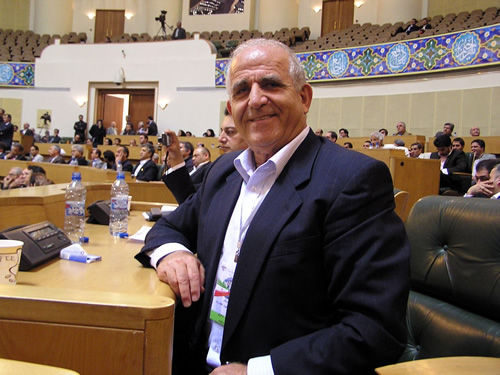


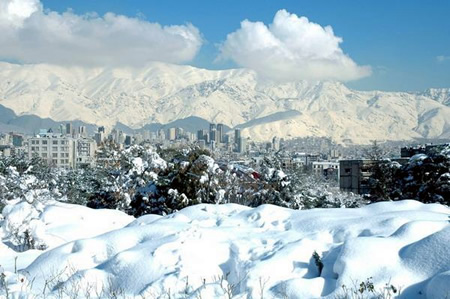
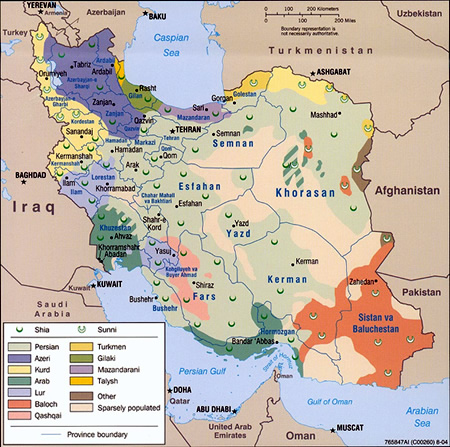

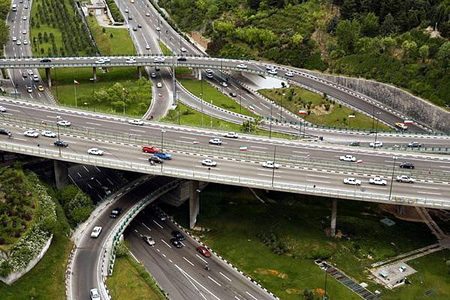
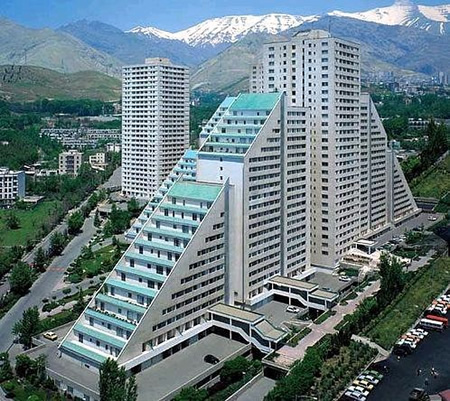


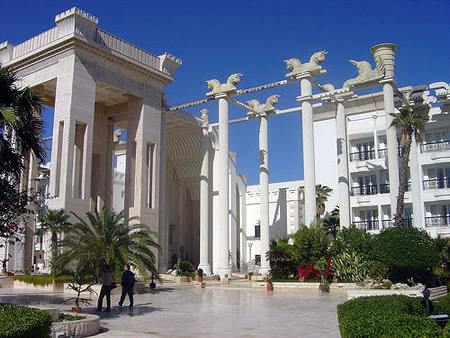

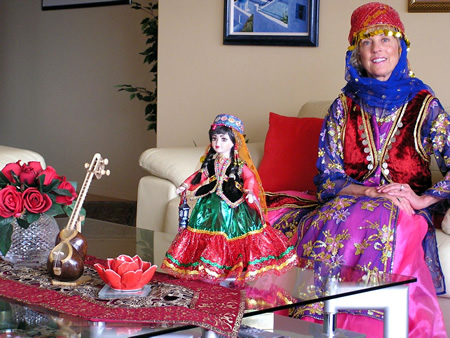
Connect